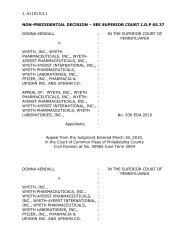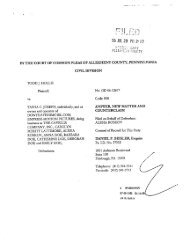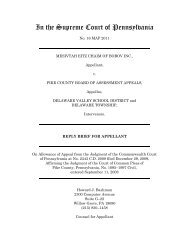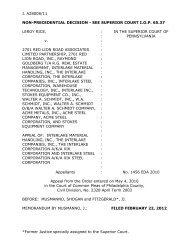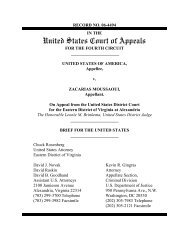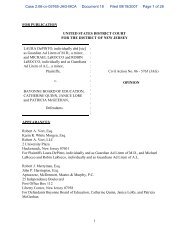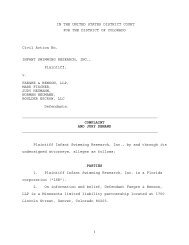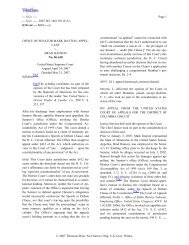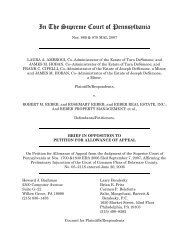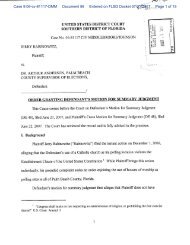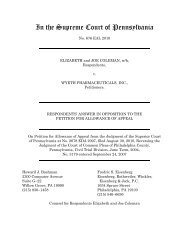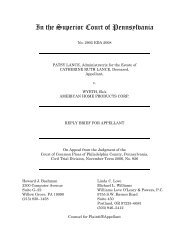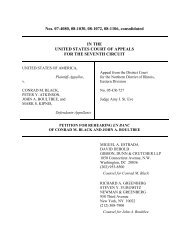Stone v. Bear, Stearns & Co., Inc. - How Appealing
Stone v. Bear, Stearns & Co., Inc. - How Appealing
Stone v. Bear, Stearns & Co., Inc. - How Appealing
Create successful ePaper yourself
Turn your PDF publications into a flip-book with our unique Google optimized e-Paper software.
finds his award overturned for failing to disclose something has no one to blame but himself. If in<br />
doubt, disclose.<br />
On the other hand, an arbitrator cannot easily control the parties’ perception of him or her<br />
during the arbitration itself. The law cannot make it too easy for arbitration losers to overturn<br />
unfavorable decisions by claiming that an arbitrator made a stray negative comment; or rolled his<br />
eyes; or looked askance at one person or another. The “actual bias” standard protects an arbitration<br />
award against these kinds of easily manufactured and largely frivolous challenges.<br />
<strong>How</strong>ever, we still believe that Kaplan’s actual bias standard for evident partiality should and<br />
does apply to non-disclosure situations. For one thing, the Third Circuit relied on Leatherby for its<br />
proposition that evident partiality “requires proof of circumstances powerfully suggestive of bias.”<br />
Kaplan, 19 F.3d at 1523 n.30. Leatherby is a failure-to-disclose case, so it stands to reason that the<br />
Third Circuit, like the Seventh Circuit in Leatherby, would support an “actual bias” standard in the<br />
failure-to-disclose context. A recent Third Circuit panel decision confirms this supposition. See<br />
Bapu <strong>Co</strong>rp. v. Choice Hotels Int’l, <strong>Inc</strong>., 371 Fed. App’x 306, 309-10 (3d Cir. 2010) (non-<br />
precedential) (applying Kaplan’s “actual bias” standard for evident partiality in failure-to-disclose<br />
case).<br />
Case 2:11-cv-05118-LDD Document 22 Filed 05/29/12 Page 17 of 35<br />
Additionally, as discussed supra, the “actual bias” standard holds true to the statutory<br />
language of Section 10(a)(2), which by its terms requires “evident partiality” to overturn an<br />
arbitration award. This is strong language, to put it mildly. And the statute makes no special<br />
exception or allowance for non-disclosure cases; no matter what the theory, a petitioner must prove<br />
“evident partiality” (or corruption) for vacatur under § 10(a)(2).<br />
Finally, the “actual bias” standard helps ensure that courts will adequately respect the finality<br />
of the arbitration process. Without the promise of finality, arbitration loses much of its appeal.<br />
17



